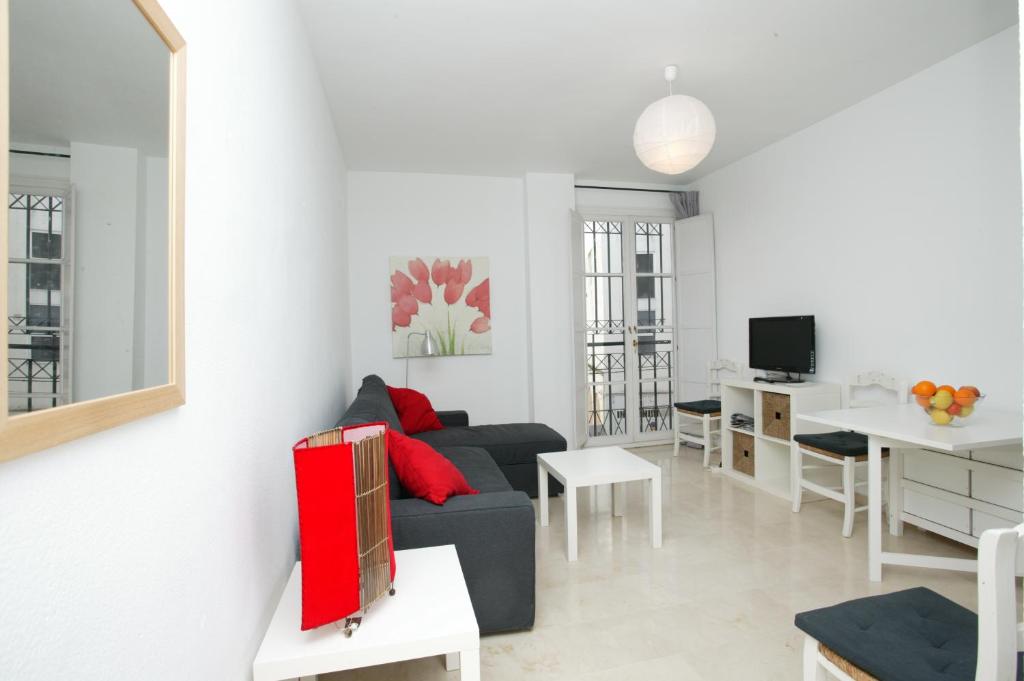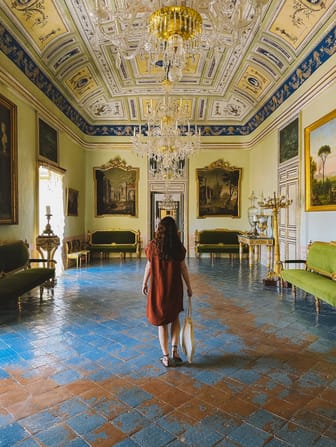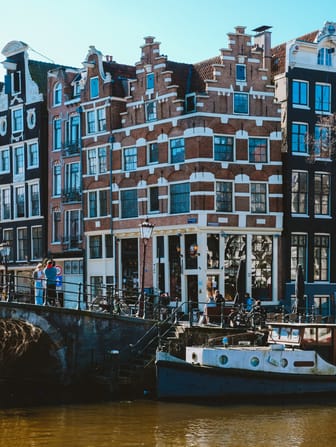Seville 2 Day Itinerary, Andalusia. Spain

Brief history
Seville was founded as the Roman city of Hispalis, after the Islamic conquest in 711 the name changed to Ishbilia. Seville became the center of the independent Taifa of Seville after the collapse of the Córdoba Caliphate in the early 11th century; later it was ruled by the Almoravids (imperial-Berber Muslim dynasty centered on the territory of modern Morocco) and the Almohads (North African Berber Muslim empire founded in the 12th century.
Seville played the role of a gateway in the transatlantic trade of the Spanish Empire, so it became one of the largest cities in Western Europe in the 16th century.
When is the best time to visit Seville
Some guides say that the best time to visit Seville is from March to May.
However, it's already a high season. That's why we suggest to visit this beautiful city in November!
We travelled to Andalusia in the beginning of November and it was perfect!
The temperatures are mild, the rush of tourist traffic hasn't reached summer volume, and the hotels tend to offer lower rates.
🧳High season: from March to June, September and October.
🧳Shoulder season: February and November.
🧳Off-season: July, August, December and January.
How to get to Seville
Almost 35 airlines, excellent train networks and buses that frequently arrive and depart from the city.
Getting to Seville by plane ✈️
The main airport of Seville is San Pablo (SVQ). It is a small airport with one terminal and one runway.

How to get to the city center from the Airport
- Airport Shuttle Bus
Runs from the airport to the city every day from 4:30 am to 12:05 am and from Seville to the airport from 5:22 am to 1 am
The Tussam bus departs from the main entrance of the arrivals hall. The whole trip takes about 30-40 minutes.
An Univiaje ticket costs 4 euros (round trip - 6 euros). You can buy it from the bus driver, from the seller at the airport terminal stop, as well as at customer service points. The ticket is valid for one trip.
Bus stations
📍Avenida Kansas City
📍Luis de Morales
📍San Bernardo
📍Prado Bus Station of San Sebastián
📍Paseo de Colón (next to Torre del Oro)
📍Bus station Plaza de Armas
Taxi from the Airport to the city Centre
📞Eurotaxi Seville: 34 658 904 289
📞Radio Taxi: 34 954 580 000 / 34 954 571 111
📞Taxi Giralda: 34 954 998 070 / 34 954 675 555
📞Seville Airport Taxi: 34 645 230 197
📞Tele Taxi: 34 954 622 222 / 34 954 621 461
📞Uber is also available.
💰Tariff 4: €24.98, valid from Monday to Friday (working days) from 7:00 am to 9:00 pm
Getting to Seville by train 🚊
Seville has one train station called Santa Justa and it’s located in the northeast area of the city, not very far away from the center.
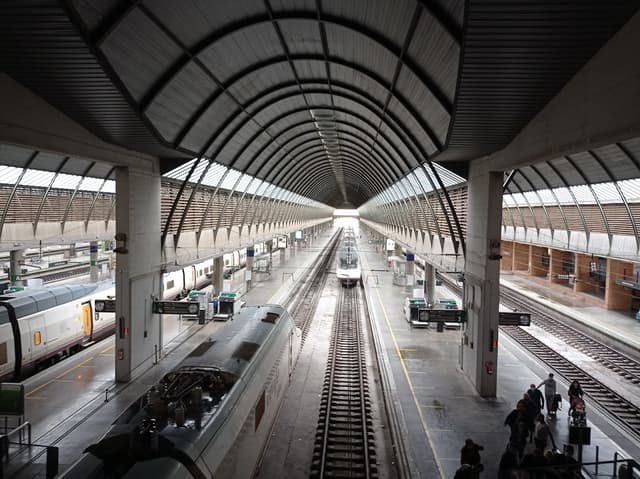
Seville can be easily reached by train, especially from Madrid and Barcelona where you can catch a high speed train. Some suburbs and surrounding towns are also connected by train.
Train tickets
Getting to Seville by bus 🚌
Bus travel in Spain is the cheapest and most affordable travel option but unfortunately not the fastest.
Seville has two main bus stations from which you can go to other regions of Spain or abroad.
Plaza de Armas Bus Station
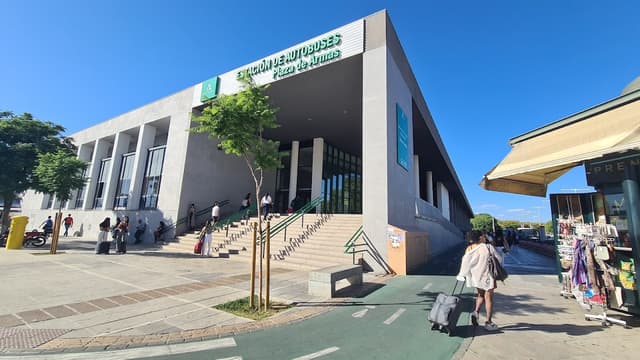
Prado de San Sebastian Bus Station

Purchase intercity bus ticket here
Our experience
We travelled by plane (Ryanair) to Málaga from Krakow.
We bought intercity bus tickets (single one-way costs 22.34 EUR) that leaves from the airport in Málaga and arrives at the bus station Plaza de Armas in Seville three hours later.
The trip by bus was really difficult! The road goes through the mountains and has many serpentines. Moreover, the heating was on, the temperature in the bus reached +28C, the air conditioning did not work and we could not open windows. People really suffered!
We wasted too much time and were very tired. Therefore, consider this only as a backup option. It's better to travel to Seville either directly by plane or train.
Public transport in Seville 🚎
Metro 🚇
Seville has one metro line with 22 stations. But the route is divided into three different zones and the price varies depending on which zones you are traveling to and from
Tickets
Single one-way ticket 1.35 EURA return ticket costs 2.70 EUR, the same as buying two one-way ticketsDay ticket 4.50 EUR
Metro-Centro tram 🚃
It is a 1.4 kilometer line that runs through the center of Seville. The tram connects Plaza Nueva with Avenida de la Constitucíon (near the cathedral).
The tram stops at:
📍Archivo de Indias
📍Puerta de Jerez
📍San Sebastián
📍 San Bernardo.
Tickets
A one-way ticket costs 1.40 EUR and can be bought on the bus.There are also reusable cards and one-day and three-day tourist passes (€5 and €10).
Another type of card is Bonobus, with which you pay for each trip you make, but at a lower price than a one-way ticket.
There is also a Tussam Recharge Card.
City Bus 🚍
Tickets
Bus tickets can be purchased from the driver (from €1.30) or at a kiosk. City buses C1, C2, C3 and C4 run through the center and around it.
Seville is an ideal city for walking! Before buying a card or an all-day ticket, look at your map of Seville to understand that all the main attractions are separated by a short distance.
Hotel Recommendations 🏨
We advise you to book an apartment or hotel near the historic part of the city, this allows you to discover Seville on foot, without the need to use public transport and waste precious time on it.
Conde Ibarra Central by Valcambre
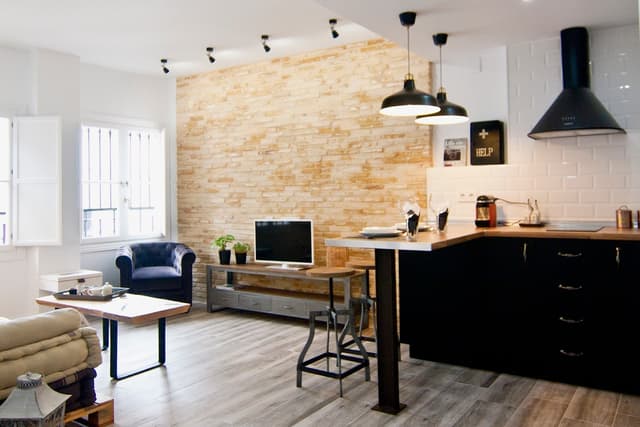
The apartment is located on a quiet and peaceful street in the old part of the city. It has a beautiful picturesque indoor courtyard. On the roof of the house there is a large sunny terrace with a view of the city and a swimming pool.
Guests of the apartments are also allowed to use it until they respect regulations.
Cosy cafes for breakfast, restaurants for dinner and small supermarkets are nearby.
Casa Palacio La Casa Blanca Suites
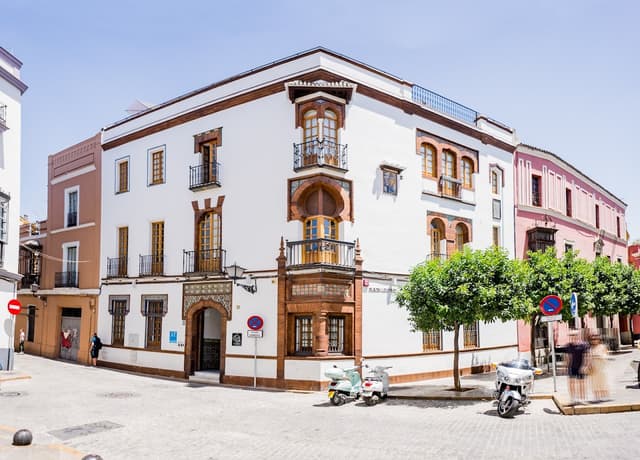
DAY 1
Dinner at Donaire Azabache
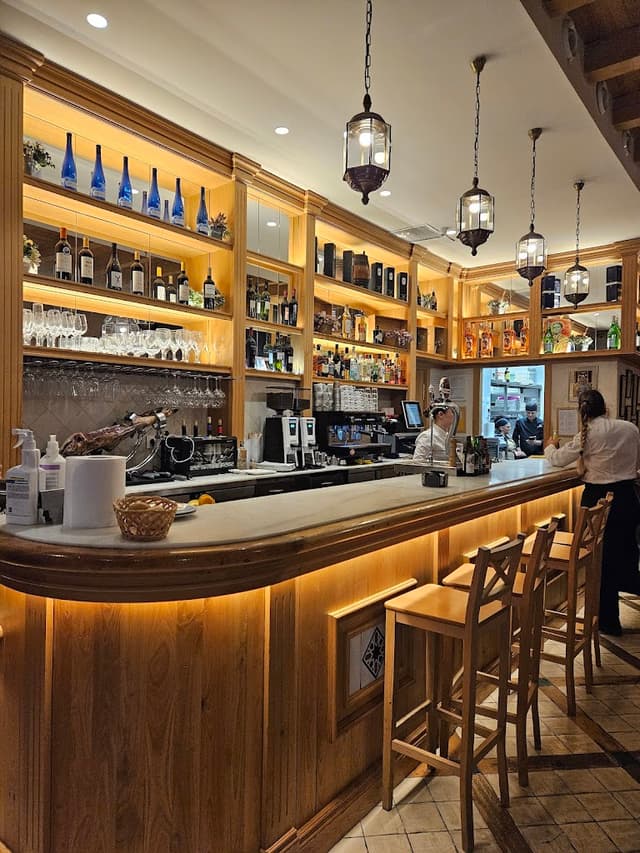
The restaurant's level in a tourist town is always easy to determine by the number of locals who dine there. This one was full with local families.
They serve delicious Sevillian snacks and tapas, desserts, sangria and good wine from the wine cellar.
All portions are big enough for two people. It is not necessary to take two main dishes, you can order one portion of snacks and one main dish as tapas. It is pretty usual for waiters that people order one dish for two, because the main principle of tapas is sharing.
Make sure to book a table via their official website
Our dinner on Day 1
🍽️ Croquetas de jamon
🍽️ Bacalao gratinado / cod with tomato sauce
Our dinner on Day 2
🍽️Bunuelo de bacalao
🍽️entrecot gallega / Galician entrecote
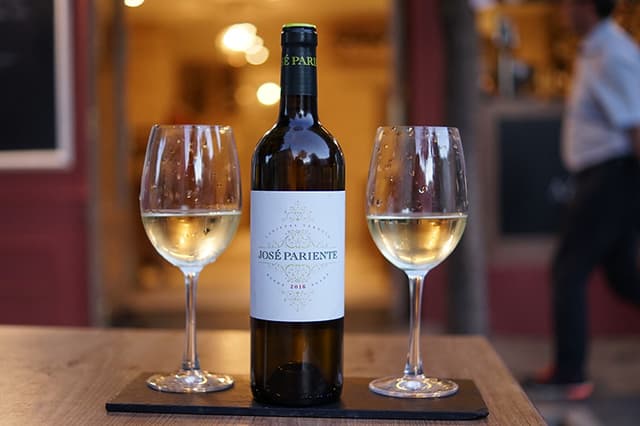
Street Art - Azulejos
The first thing we pay attention to when we get to the old streets of Seville are the colored azulejo tiles. Ceramics from Andalusia is more than just tiles. It is a style of processing architectural details that adds character and atmosphere to a place, a beautiful addition to large surfaces - both horizontal and vertical. In combination with brick, the azulejos create an ensemble that is impossible to pass by.
They decorate with azulejos exterior and interior windowsills, stair treads, park benches, balustrades, fences, lanterns, all types of floors, walls and ceilings, sacred images on the exterior walls of temples, balconies and bay windows.
Plaza del Cabildo
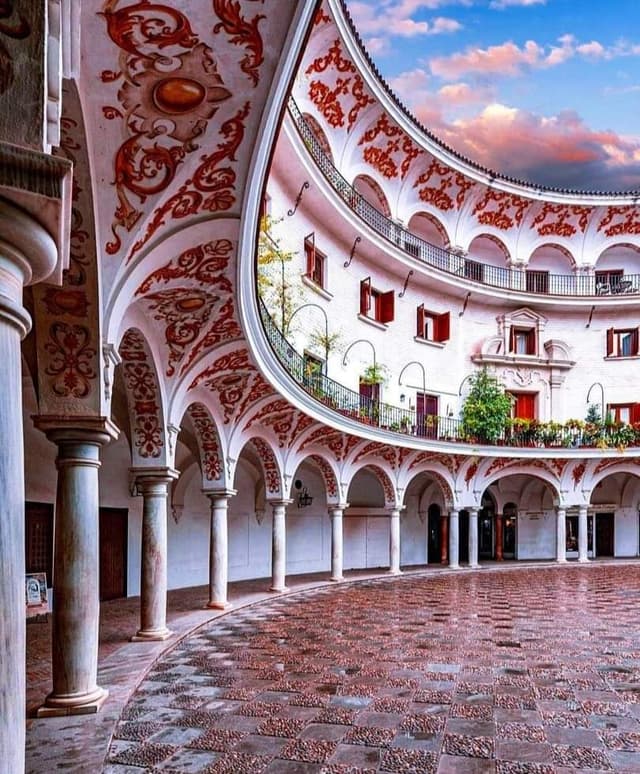
Every Sunday, the square is filled with numerous stalls for collectors. Here you can buy coins, stamps, banknotes, small antiques, stickers, postcards, watches, minerals, etc.
Catedral De Santa Maria De La Sede De Sevilla i La Giralda
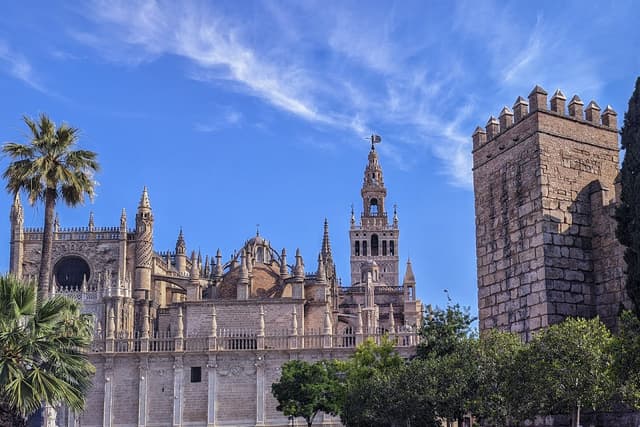
Santa Cruz district
The Santa Cruz district (also called Juderia) is close to the Cathedral and the Alcazar. In the Middle Ages, there was a Jewish quarter here.
When the Christians seized power, all non-believers were forcibly expelled from Seville, or forced to convert to Christianity.
Rosina's balcony
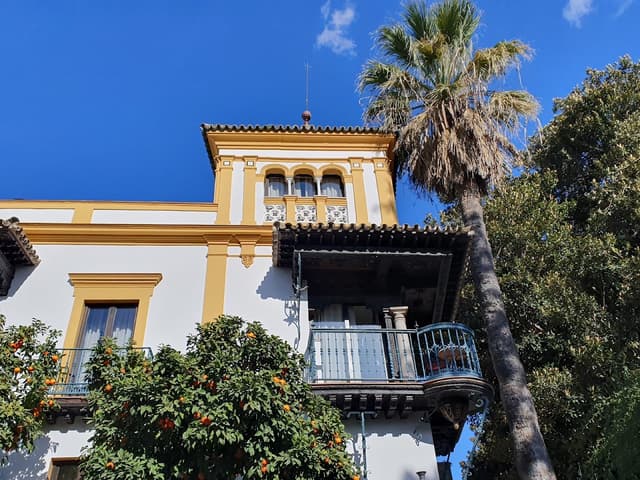
On Alvaro Square, pay attention to a characteristic balcony - the so-called Rosina Balcony, under which Figaro and Count Almaviva sang.
La Susona
In a small square between Plaza Doña Elvira and Calle Agua, there is an evidence of one of Seville's oldest stories, the legend of Susona Ben-Suson. Look for one particular tile with the skull.
The legend about Susona
The story took place in 1480, in the last years of the existence of the Jewish community in Seville. By this time, as the newly-emerging kingdom of Spain sought to strengthen itself through enforced conformity to Catholicism, many Jews had already left or converted to Christianity, but suspicion among some Christians that these conversos were not true converts, and hoped to bring about a restoration Judaism, had recently led to the creation of the Spanish Inquisition, charged with rooting out heresy and religious dissent wherever it was to be found.
Don Diego de Susona, a wealthy merchant, was one such converso, and alarmed by the threat to his position, he convened a secret meeting of prominent conversos to discuss the possibility of armed insurrection.
His daughter Susona, however, had a Christian boyfriend, a young noble, who she feared would be put in danger by an uprising, and she revealed the plot to him. Her boyfriend promptly reported them to the authorities, and the conspirators along with Susona's father were duly arrested and brought before the Inquisition, tried and executed.
The girl repented all her life in a monastery, and after her death she ordered her skull to be hung on the door of her parents' house. The skull remained in this place until the 18th century as a testimony of Susona's grief and the duplicity of Christians.
DAY 2
Breakfast in Almazen Cafe

Cafes and eateries in Seville open quite late. But this one is open from 9 am.
This cafe is located walking distance from the apartments we recommended, so it is also a very convenient option.
The cafe offers a variety of tapas, sandwiches, sweet homemade pastries, and granola.
You should definitely try their fresh orange juice from local oranges! They also offer a smoothie of a day.
🍊The local Seville oranges are the best variety for juicing and making traditional marmalade. Each glass of juice has a slightly different taste, because each orange is unique.
In Seville, residents often drink a glass of fresh juice instead of coffee in the morning. Just as the Italians start the day with a small espresso, the people of Andalucía start the day with orange juice.
Puerta del Leon
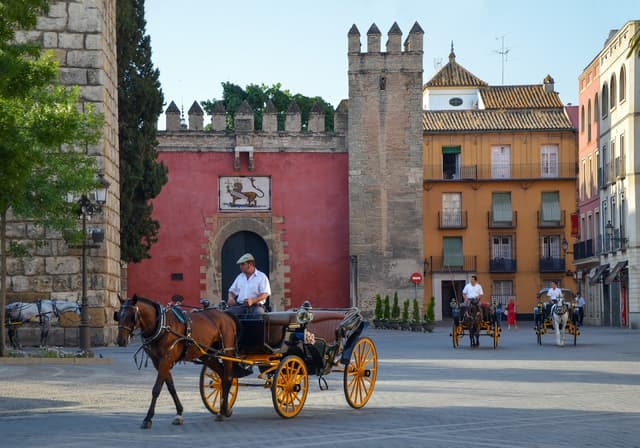
Real Alcazar
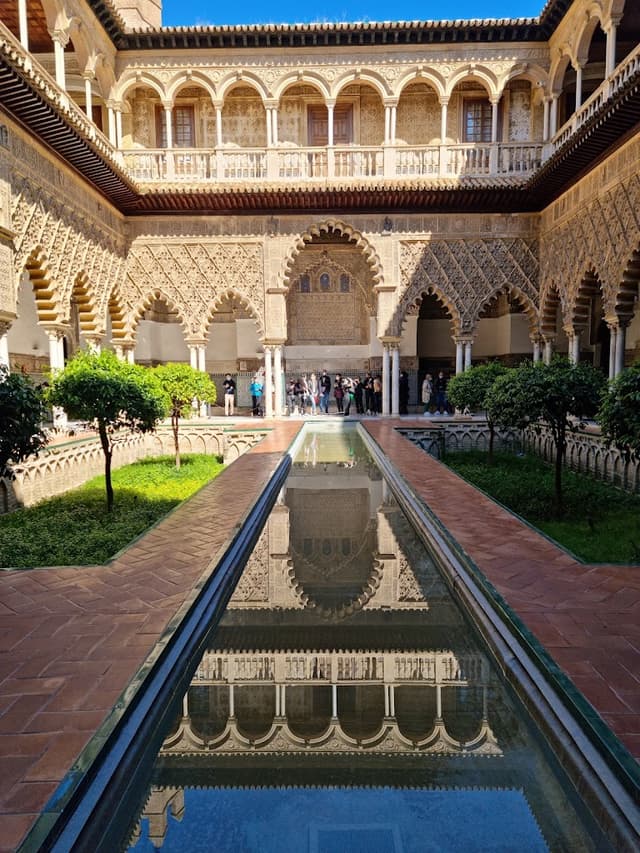
The Alcazar is one of the biggest attractions in Seville, so it is worth buying an entrance ticket in advance, for a specific day and time. It took us half a day to visit the palace complex. Therefore, we advise you to book the morning hours, in addition, there are fewer tourists in the morning, in the afternoon there are too many visitors.
You should arrive at the place 15 minutes before the time indicated on the ticket.
Security guards thoroughly check identification documents and personal belongings.
Approximate duration of the visit: 3-4 hours
This beauty dates back to the second half of the 14th century, at first it was a Moorish fort, then the Almohad dynasty turned it into a palace, and later the Alcázar came into the possession of the Spanish kings.
Alcázar remains the residence of King Philip VI of Spain.
The Muslims left a huge part of their heritage in Seville. Seville owes much of its unusual architecture to them. Arab troops captured Seville in 712, and it remained under their rule for more than 500 years.
In the 13th century, Christians recaptured Seville and expelled the Moors. Traditions, styles and influences have been intertwined for centuries, as a result in the 12th - 16th centuries.
That’s how the unique synthetic style of Mudejar was born.
Movies Filmed in Real Alcazar 🎬
Fans of good cinematography will appreciate the fact that the Alcazar appeared in the movie "Kingdom of Heaven" - the rooms of the palace "played" the residence of the ruler of Jerusalem.
Alcázar also appeared in the 5th season of "Game of Thrones", this time the gardens and rooms of the palace "played" the city of Dorne, which was ruled by the Martell family in the series.
Real Alcazar Gardens

General Archive of the Indies
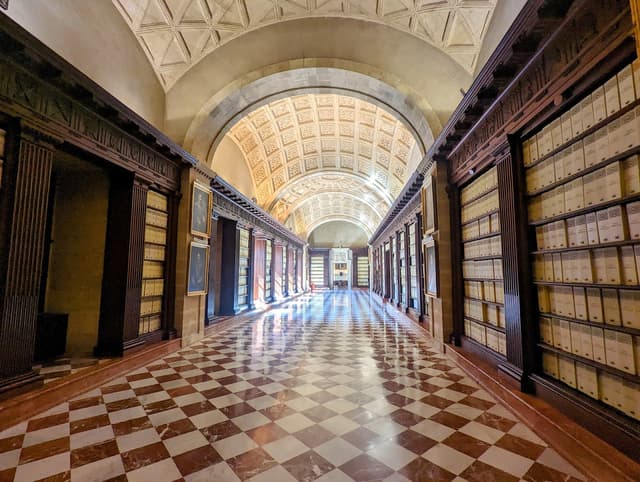
The archive contains a huge amount of materials from the first conquistadors to the end of the 19th century.
Here you can look at the thick diaries of explorers, the journal of Christopher Columbus, maps and plans of colonial cities, captains' records of weather conditions, as well as other documents that reveal the working mechanism of a powerful colonial empire.
The register of all goods loaded on the ship in 1603!
Snack in De Nata Santa Cruz
Fabrica de Pasteis de Nata
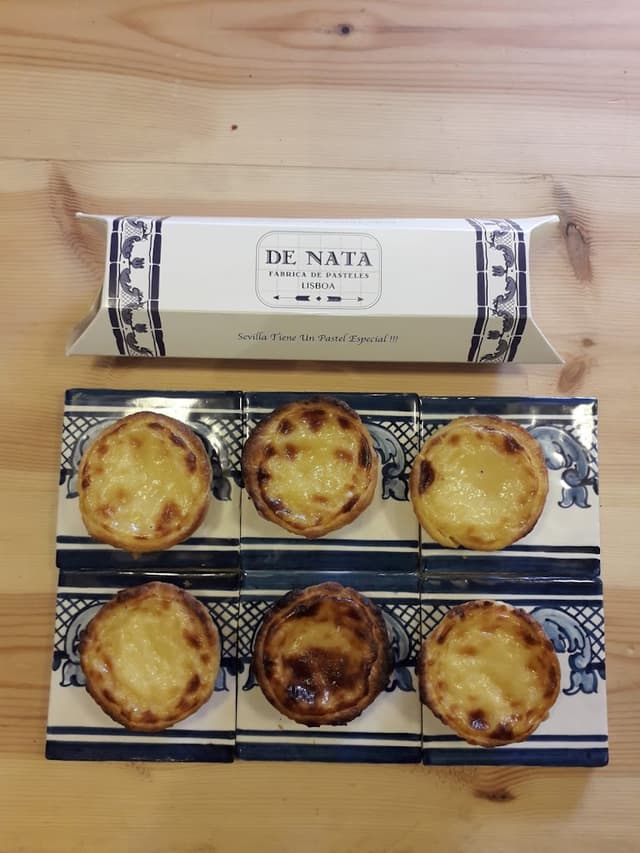
Plaza de Espana
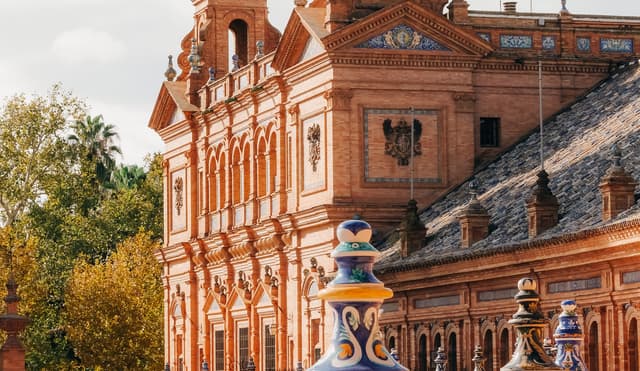
Plaza España was designed by the Spanish architect Aníbal González and built in 1929 on the occasion of the Ibero-American Exhibition.
The entire square is surrounded by a long pavilion crowned by two towers, it was built in the Neomudejar style with Art Deco elements.
The main part of the square has 48 small niches with stone benches. Each niche and bench is decorated with azulejo tiles and is dedicated to a particular Spanish province.
The azulejo mosaics depict the most important events in the history of these provinces.
Free Flamenco performance on Plaza de Espana
There is a big chance that you will see an artistic troupe that performs. Usually it's a very high-quality and emotional performance. We really enjoyed it!
Setas de Sevilla
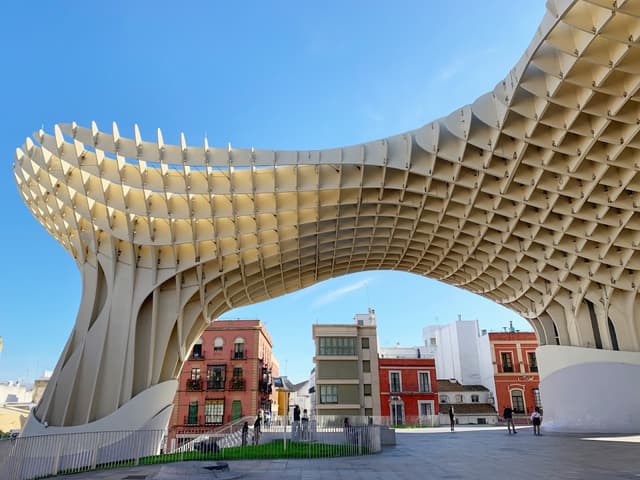
It was designed by the German architect Jürgen Mayer. Locals call it "Mushrooms of Seville." Its main task is to create shade on hot days.
On the first floor, you can take a memorable photo with "I Love Seville" sign and from the first floor you can get to the terrace.
Recently, the entrance has been for free, in May 2023 it cost 10 euros, and in November 2023 the price reached 15 euros per person.
Sandwiches from Jechura

Big Bocadillo Plus sandwich costs 9 EUR
Sabor a Espana
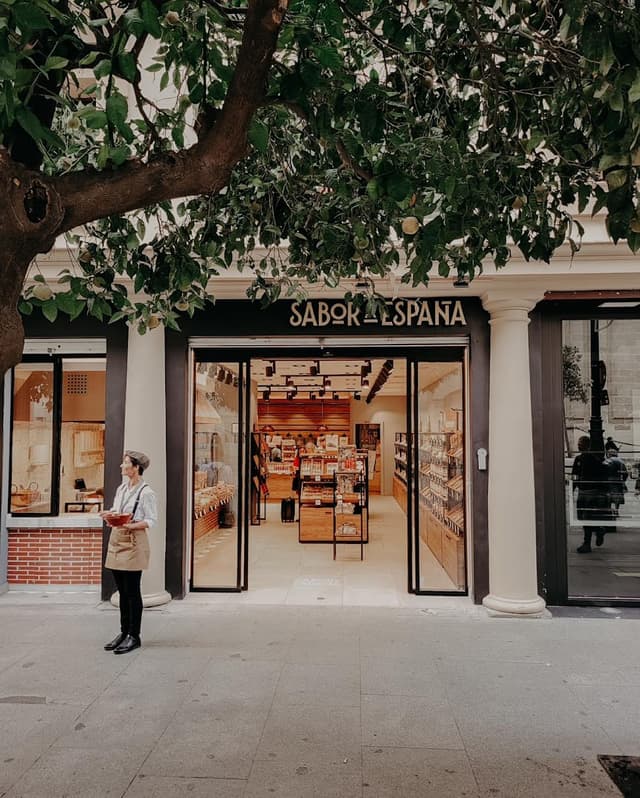
In this store you will find a variety of traditional handmade nougat and turrones.
Try the traditional Seville turron de yema tostada - nougat with a fried yolk.
Other city attractions you might also like
Casa de Pilatos
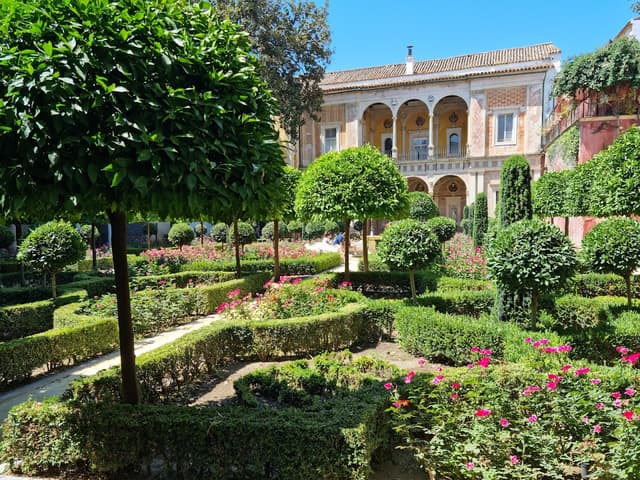
Royal Tobacco Factory

Currently it's the University of Seville but 2 centuries ago there used to be the largest in Spain cigar and cigarette factory operating mainly on Cuban tobacco.
It is the place where the most of the action in the Opera about Carmen takes place. Carmen was a sensual gypsy who worked in a cigar factory in Seville.
Her monument stands in front of the Bullfighting Arena.
Plaza de Toros de la Maestranza

A controversial attraction that we skipped. If you would like to know the backstage of corrida, we encourage you to visit arena but not the bullfighting show!
La Carboneria - Flamenco
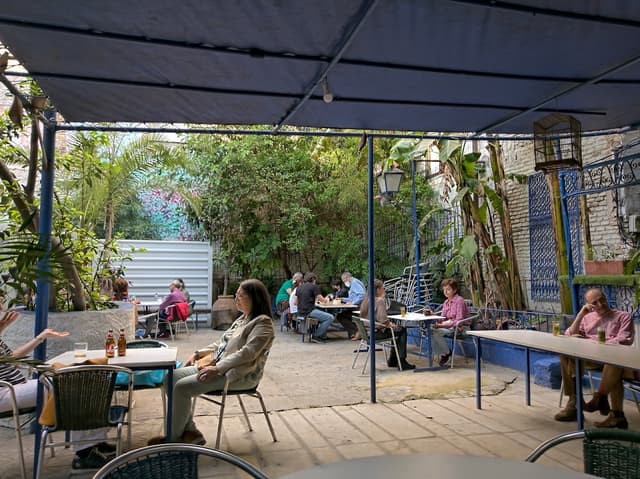
The show is free, and you can order tapas at the bar.
The performance starts at 20:30 and lasts approximately 30 minutes, with each subsequent performance every 30 minutes until 23:00.
Have a great trip to Seville!
Did you like this guide?
- Subscribe to get notified when we publish a new informative guide.
Other handy & aesthetic guides
The home for unique & authentic travel



